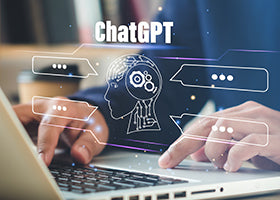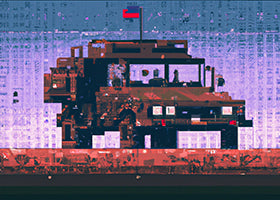
Artificial intelligence (AI) is a term that has become increasingly familiar to people around the world. It has the potential to revolutionize various industries and improve many aspects of our lives. However, not all AI is created equal. There are two types of AI: narrow and general. While general AI aims to create machines that can think and learn like humans, narrow AI focuses on specific tasks and is designed to perform them with precision and efficiency. In this blog, we will focus on narrow AI and explore its potential applications.
ChatGPT is an example of a narrow AI application for natural language processing. Its capabilities cross natural languages and extend to most programming languages as well. It can even imitate writing styles. For example, if you ask ChatGPT to give you a summary of the book "Animal Farm" using Shakespeare's writing style, it can do it to near perfection. This is an example of narrow AI at a large scale, using many high-powered servers and GPUs in a datacenter with a controlled environment.

While these versions of narrow AI have their place, there are many applications that can benefit from AI, but do not have the luxury of a datacenter environment. Most solution offerings focus on larger scale-out systems with many expensive and power-hungry GPUs for training and inferencing. However, what options are there for smaller solutions on a power and connectivity budget?
Since there is an endless list of problems and possible solutions for narrow AI applications, I will focus on a few of the most difficult ones. These include applications with size, weight, and power constraints with the compute capacity requirement of an AI inferencing platform. Two sectors that need these solutions right now are the military and their fleet of vehicles, and commercial autonomous trucks. Overcoming these challenges will benefit most AI transportable solutions.
What are these challenges? Some of them include strict power budgets and maximizing performance within that range of power. Other issues include limited connectivity, redundancy, and ruggedization to withstand the tough environment they will operate in. Another priority is having a secure system. Any compute system that communicates bidirectionally is a cyberattack vector and must be protected. Another challenge on the shortlist is having ports to connect devices and sensors for ingesting data into the system. These devices could be cameras, radar, LIDAR (light detection and ranging) sensors, and many other precision sensor options.
All of these challenges are solvable problems. Some require different types of hardware in form factors not always found in datacenters, including high-performance embedded systems, controllers, GPUs, tensor processors (TPUs), arm-based CPUs, and data processing units (DPUs). These technologies can be used to perform real-time data processing and decision-making. Many interesting components are available to solve a wide variety of processing needs. All these solutions require creative thinking and engineers who enjoy solving such challenges.
Building an AI configuration with budget limitations requires clearly defined tasks to focus the system on performance and inferencing as much as possible. This means that training needs to be done in the datacenter and stored locally to enable autonomous operation. Data transfers to home when connectivity is available should be checkpointed so that if connectivity is lost, it is not required to start transfers over from the beginning.
Narrow AI systems can be used to solve a variety of functions such as object recognition, situational awareness, logistics and supply chain management, and target tracking. Autonomous navigation is an obvious AI function that can be used in both autonomous trucks and military vehicles. This function enables the vehicle to navigate to its destination without human intervention. Cybersecurity is also crucial in both industries to protect these valuable resources from being hacked or hijacked. Predictive maintenance is another important function that AI can be used for. The AI can monitor the vehicle's health and detect potential issues before they become critical.

Object recognition is a key AI capability that can be used in both military vehicles and autonomous trucks. Cameras and sensors can identify objects such as other vehicles, obstacles, pedestrians, friends, and enemies. Object recognition is a critical component to provide 360-degree situational awareness, allowing the vehicle to detect potential hazards and respond accordingly.
From a military perspective, Intelligence, Surveillance, and Reconnaissance (ISR) and Command, Control, Communications, Computers, Intelligence, Surveillance, and Reconnaissance (C4ISR) are additional AI functions that can be used in military vehicles. These functions enable the vehicle to gather and process intelligence and provide critical battlespace awareness, allowing commanders to make informed decisions.
In conclusion, building narrow AI systems with power, compute, and connectivity limitations at the edge is possible with current technology, which is improving all the time. One Stop Systems is working hard to solve these challenges at the edge every day.
With a well-designed and implemented AI system, it is possible to solve complex problems in transportation, logistics, and cybersecurity, among others. By leveraging the power of AI, we can improve the safety and efficiency of military and commercial transportation systems, reduce costs, and increase reliability. The possibilities are endless, and we are excited to be part of the solution.
We would like to start a conversation with you to discuss what is available today and how we can customize a solution to meet your needs.
Click the buttons below to share this blog post!

By: Jaan Mannik – Director of Commercial Sales
The term AI, or Artificial Intelligence, is everywhere nowadays and has quietly woven itself into the fabric of our daily lives. It powers the recommendations we see on streaming platforms, the navigation apps that guide us through traffic, and even the virtual assistants that answer our questions in seconds. From optimizing energy use in smart homes to predicting market shifts in finance, AI has become the invisible engine driving convenience, efficiency, and insight across industries.
In manufacturing, AI-driven robots collaborate with humans to streamline production. In agriculture, machine learning models monitor crops, forecast yields, and conserve resources. Retailers use predictive analytics to anticipate consumer needs before customers even express them. The reach of AI is no longer confined to futuristic labs, it’s in our phones, vehicles, and cities, constantly learning and adapting to serve us better.

OSS PCIe-based products deliver critical advantages for modern military sensor systems by enabling real-time data acquisition, processing, and transmission in rugged, mission-critical environments. These benefits stem from their ability to support high-bandwidth, low-latency interconnects, modular scalability, and environmental resilience, all of which are essential for today’s advanced military platforms.

Companies today are being asked to do more with data than ever before. Bigger AI models, faster insights, and workloads that don’t stay in one place, it’s a lot to keep up with. Traditional infrastructure just isn’t built for this kind of speed and flexibility.
The answer isn’t about throwing more hardware at the problem. It’s about building smarter, more agile infrastructure that adapts as demands change. And that’s where scale-out and increasingly, a blend of scale-out and scale-up come into play.